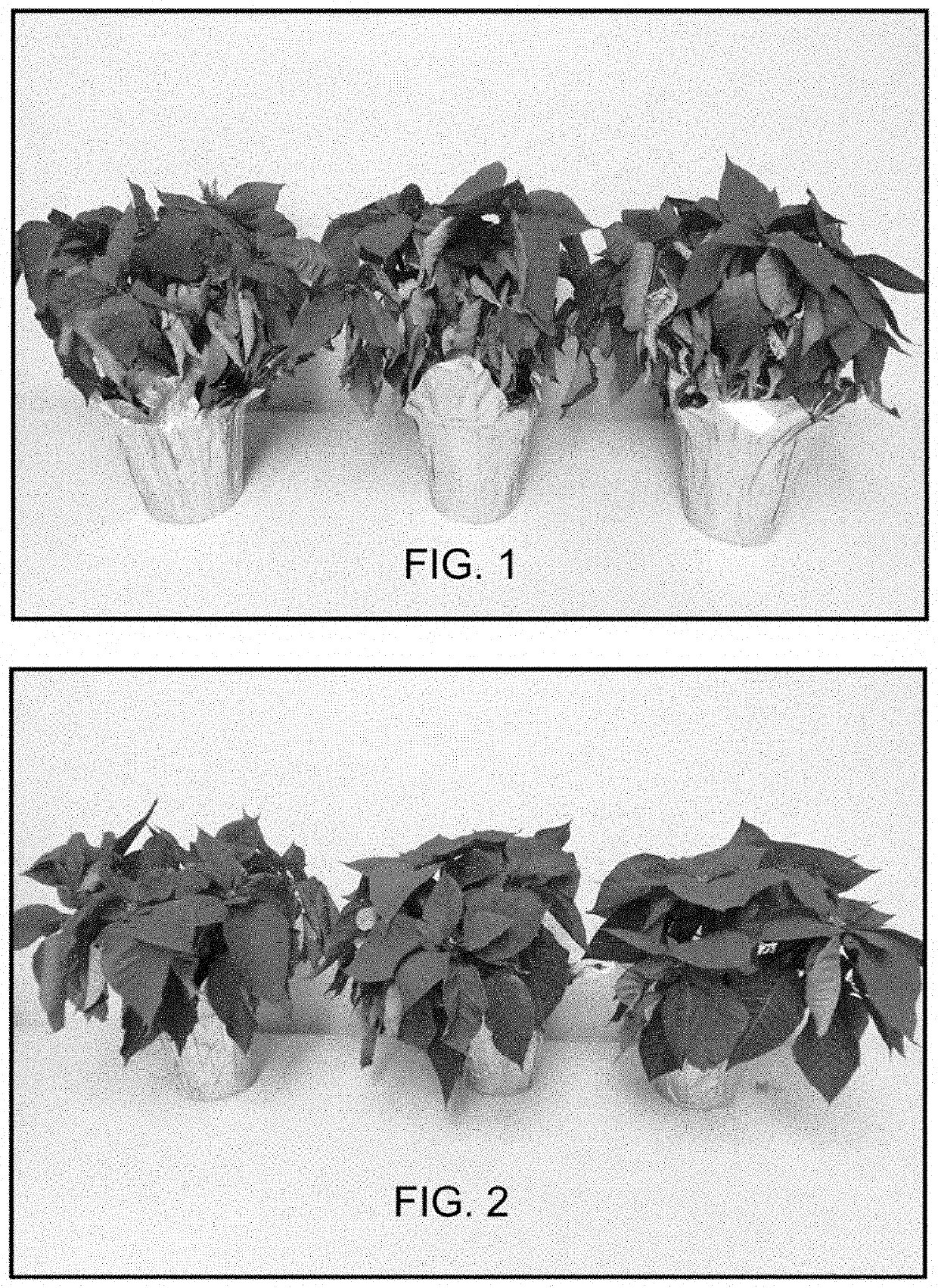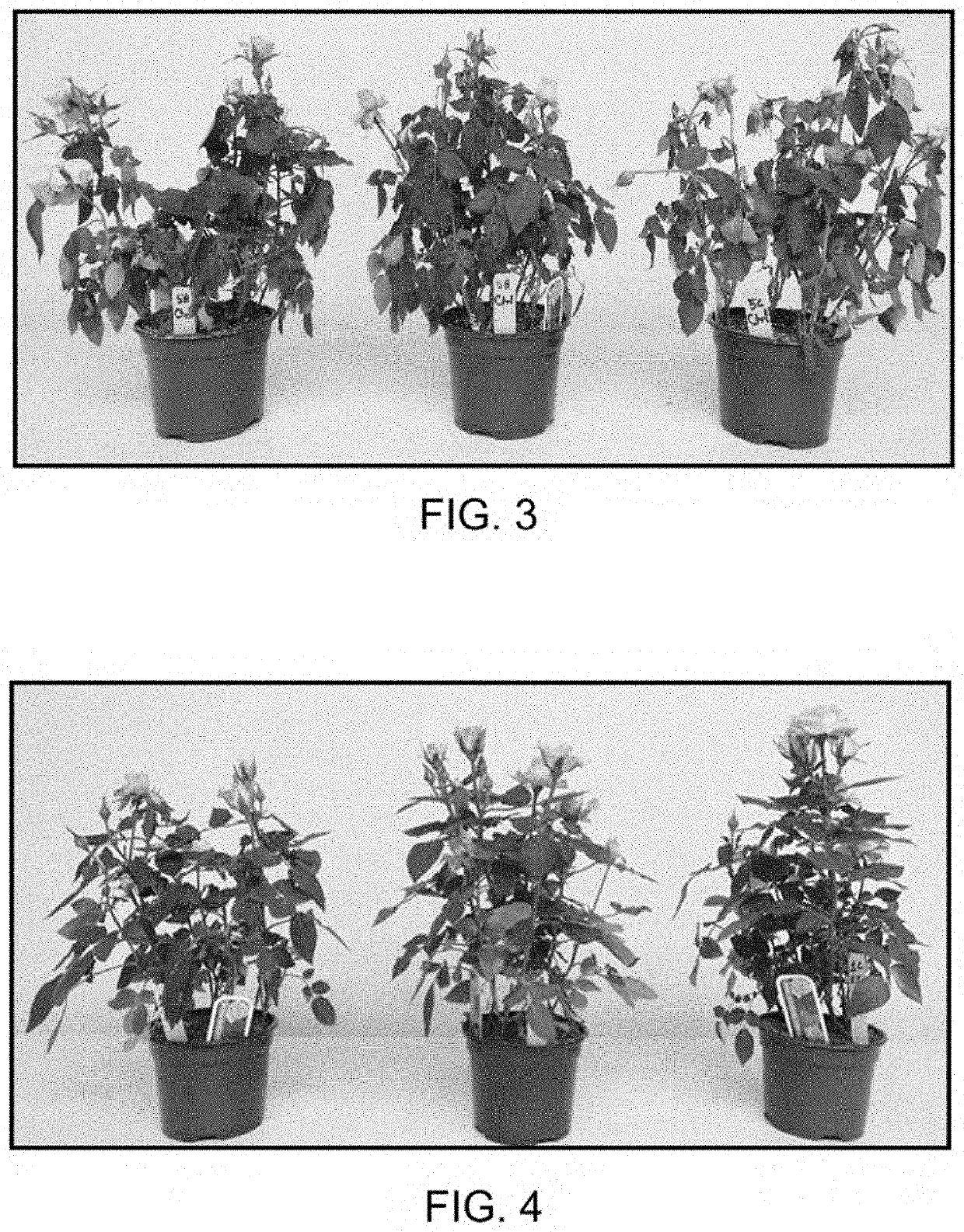Compositions and methods for improving the drought tolerance of plants
- Summary
- Abstract
- Description
- Claims
- Application Information
AI Technical Summary
Benefits of technology
Problems solved by technology
Method used
Image
Examples
example 1
[0079]A liquid concentrate for forming a composition according to the present invention was prepared using the masses included in table 4 below.
TABLE 4MaterialMass (g)Erythorbic Acid250Betaine250SOAX ®5Polyoxyethylene sorbitan monooleate2.5ISOCIL ® RW0.01ACID STABLE AQUA 52700.05WaterBalanceFinal Volume1 L
[0080]The liquid concentrate thus formed was used in all of the following examples. In each case, the liquid concentrate was diluted with deionized water at a 1:50 dilution ratio to obtain the composition used in the examples.
example 2
[0081]A selection of finished poinsettia plants was purchased from a commercial grower. The plants were grown in peat-based media. Half of the poinsettias were designated as “control” poinsettias, and were watered with water only by sub-irrigation. Sub-irrigation was conducted when the soil moisture content of the pots was approximately 50%, by placing the pots in a tray with water for approximately 30 minutes to completely equilibrate the media moisture content. The other half of the poinsettias were sub-irrigated in the same manner, except that they were treated with a composition (diluted) according to Example 1. No further watering was done to either group of poinsettias after the initial treatments.
[0082]The poinsettias were left in the same greenhouse to ensure constant conditions. The temperature was maintained at about 25° C. The humidity was 50-60% and light levels were at approximately 400 μmoles / m2 / sec. The number of days required for each plant to wilt was recorded. The ...
example 3
[0085]The same procedure as used in Example 2 was repeated with potted indoor roses. FIG. 3 shows indoor potted roses after 8 days of drought stress. FIG. 4 shows indoor potted roses treated with the composition according to Example 1 after 8 days of drought stress.
[0086]The change in the pot weight during the shelf life study was similar between control and treatment, however, a significant improvement in drought tolerance was observed. Potted roses treated with the inventive composition maintained quality for 7.5 days, while the control plants lasted 5 days, which is an additional 2.5 days improvement in shelf life.
PUM
 Login to View More
Login to View More Abstract
Description
Claims
Application Information
 Login to View More
Login to View More - R&D
- Intellectual Property
- Life Sciences
- Materials
- Tech Scout
- Unparalleled Data Quality
- Higher Quality Content
- 60% Fewer Hallucinations
Browse by: Latest US Patents, China's latest patents, Technical Efficacy Thesaurus, Application Domain, Technology Topic, Popular Technical Reports.
© 2025 PatSnap. All rights reserved.Legal|Privacy policy|Modern Slavery Act Transparency Statement|Sitemap|About US| Contact US: help@patsnap.com



